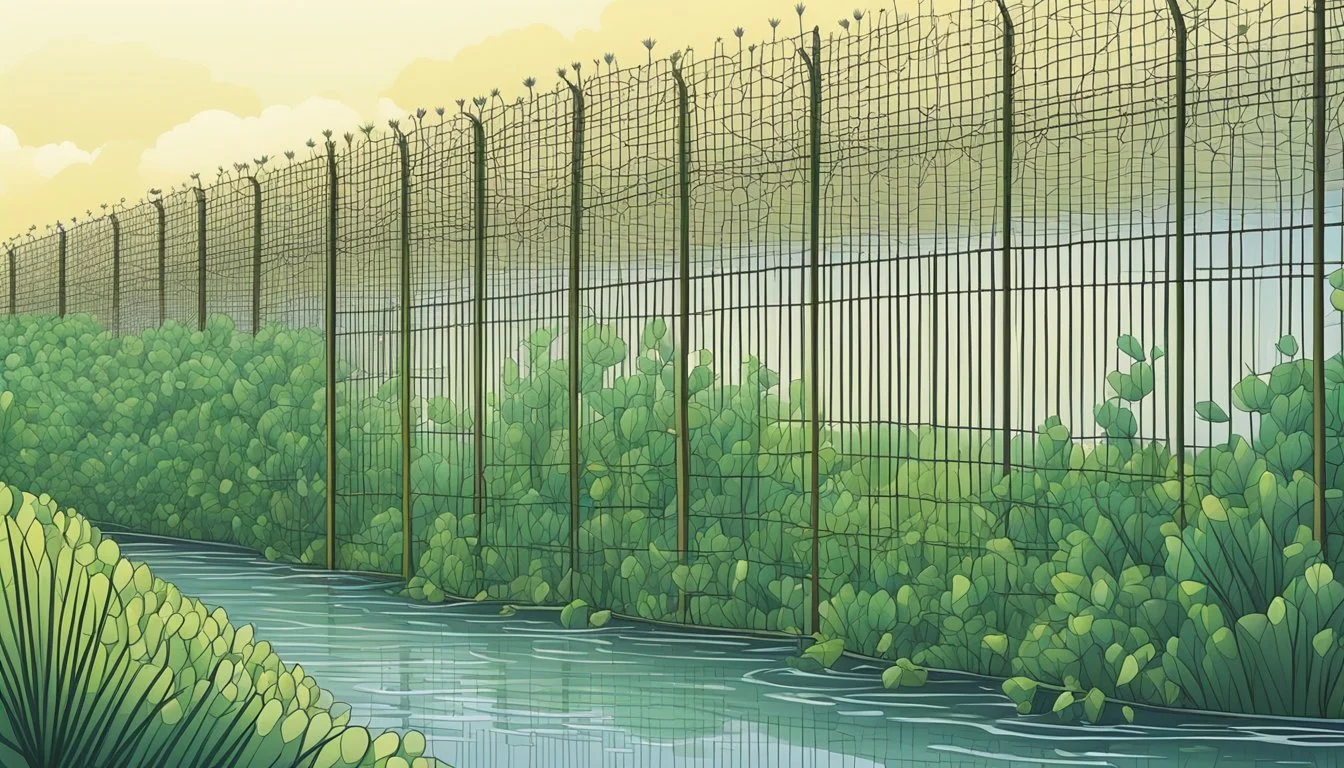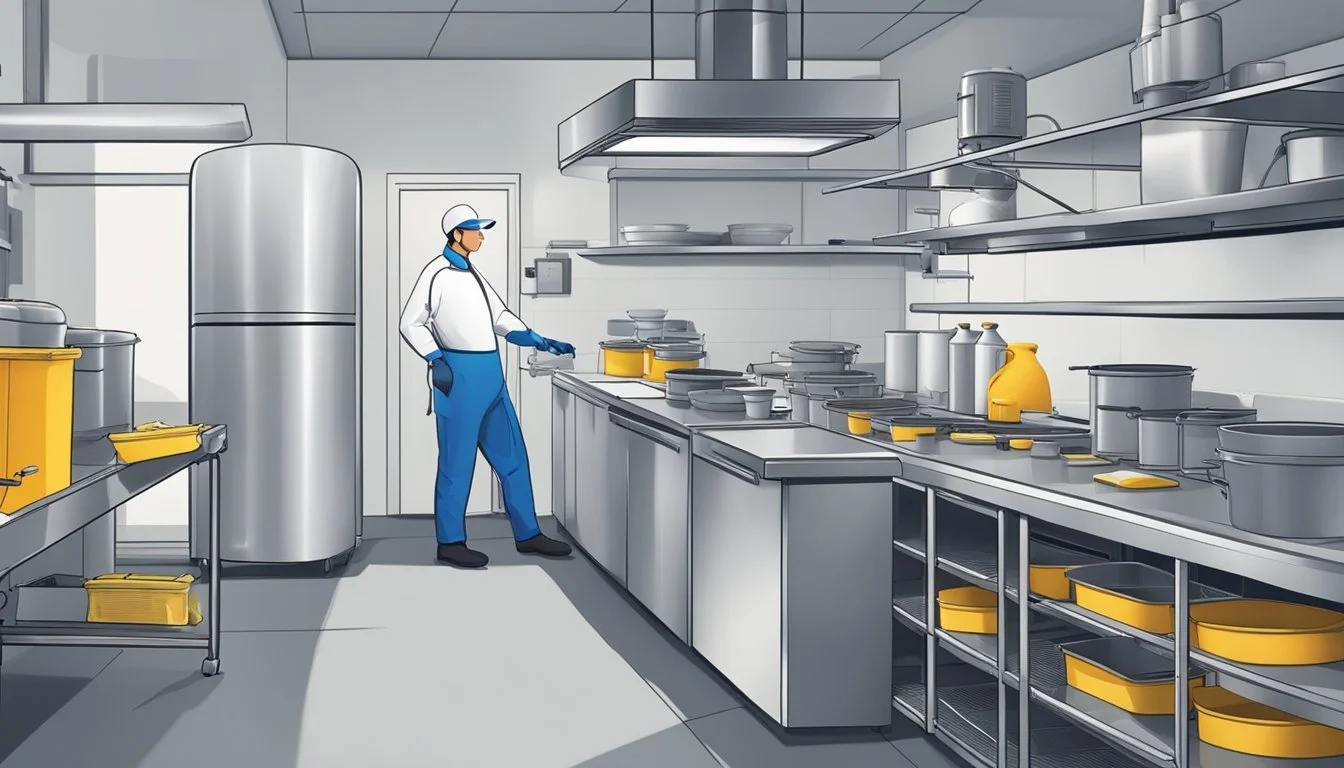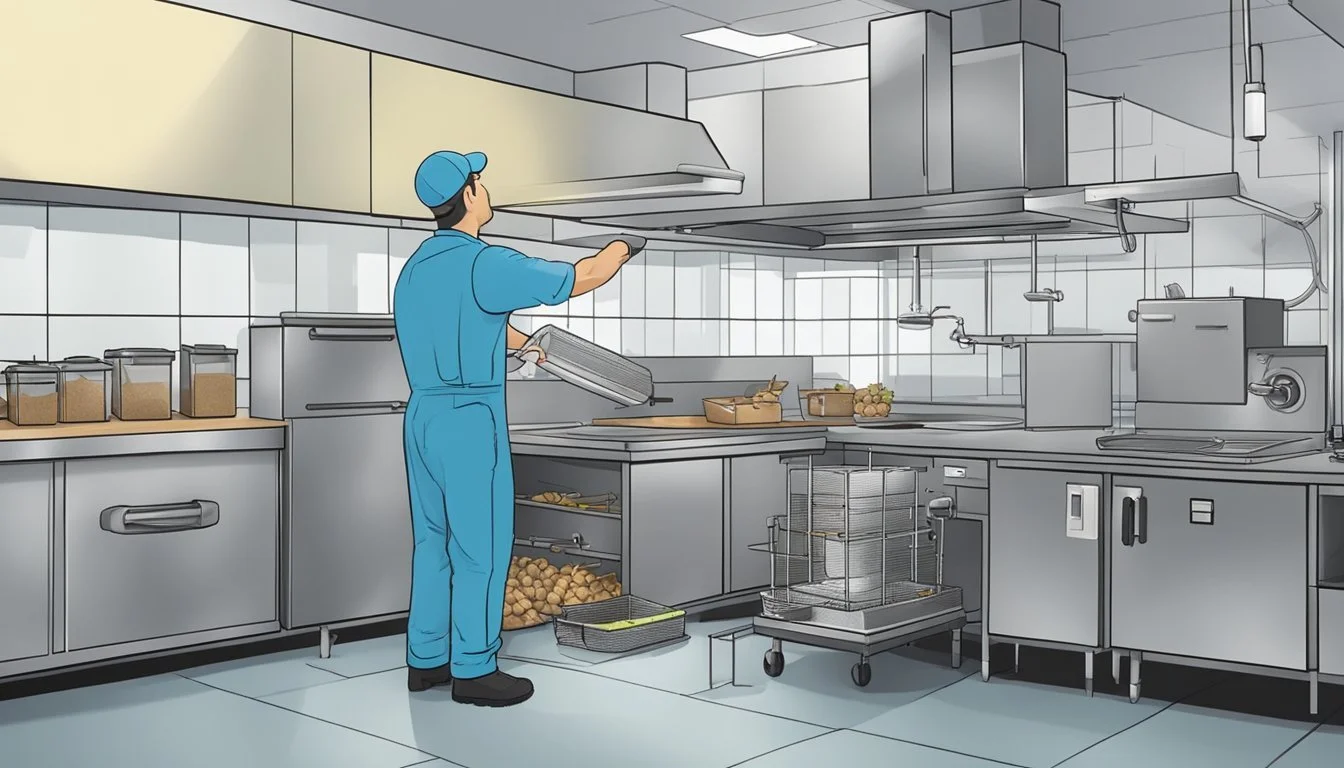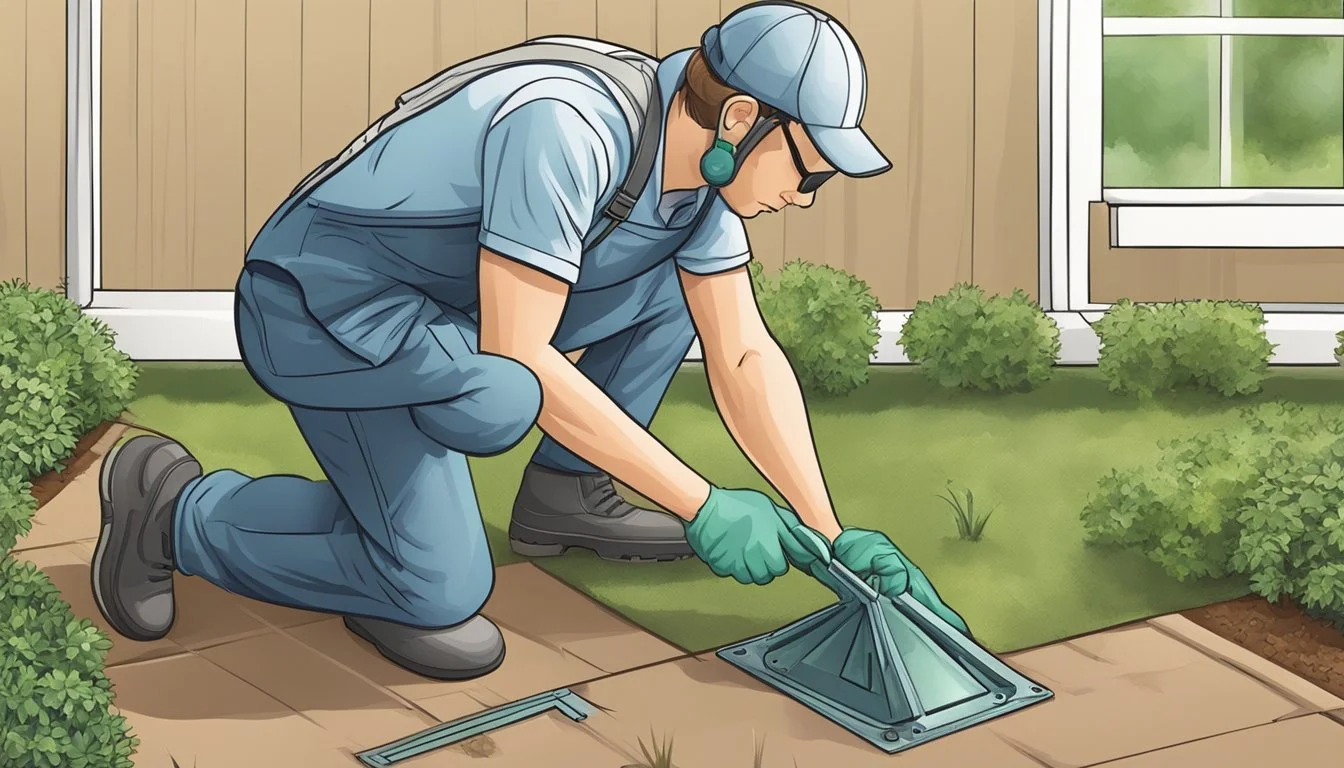Physical Pest Control Methods
Effective Strategies for Your Home and Garden
Physical pest control encompasses a variety of tactics to combat pests through direct means. These methods stand in contrast to chemical strategies, focusing instead on removing or blocking the pests physically. Homeowners and farmers alike deploy these strategies to protect their property from unwanted guests, ranging from insects to larger animals. They provide a safe, often environmentally friendly approach to pest management, particularly important in situations where chemicals pose a risk to health, crops, or non-target species.
Traps and barriers are the cornerstones of physical pest control, serving both to deter and to capture or kill pests. Techniques include everything from simple flypaper to sophisticated, multi-chambered traps designed for larger rodents. In agricultural contexts, physical control might involve using nets or screens to protect plants from bird or insect infestation. Other methods can manipulate environmental conditions, like temperature extremes, to hinder pest survival, ensuring they remain effective year-round.
It is imperative to understand the behaviors and weaknesses of different pests to implement these physical control measures effectively. For example, the use of heat is lethal for bed bugs at specific temperatures, just as extreme cold can be employed against weevils. Employing these methods can contribute to an integrated pest management plan, combining various control strategies for a comprehensive solution to pest problems.
Principles of Physical Pest Control
Physical pest control is a critical component in managing pests by utilizing tangible measures. These approaches can vary from simple hand-picking of pests to sophisticated temperature control methods.
Understanding Physical Control Methods
Physical control methods involve the use of manual techniques and physical barriers to prevent and eliminate pests. Common strategies include hand-picking, traps, screens, nets, and mulching. For instance, farmers utilize physical barriers like row covers to protect crops from insects without the need for chemical pesticides. Physical controls like these are designed to either block pests from reaching their target or remove them from the environment without the use of toxic chemicals.
Advantages of Physical Over Chemical Methods
Physical methods are often preferred for their eco-friendly nature, posing fewer risks to human health and the environment compared to chemical control. Unlike chemical pest control, which may involve toxic chemicals that can leave harmful residues, physical controls reduce the need for such substances. Additionally, physical strategies do not contribute to the development of pesticide-resistant pest populations—a significant concern in the realm of pest management.
Integrated Pest Management (IPM) and Physical Methods
Within Integrated Pest Management (IPM), physical tactics are crucial. IPM integrates multiple strategies including biological control, cultural control, and chemical control, with a strong emphasis on using less harmful methods first. By incorporating physical measures into IPM, pest management becomes more comprehensive, relying on a well-rounded set of practices informed by thorough monitoring and accumulated experience.
Role of Monitoring in Physical Pest Control
Monitoring is fundamental in the execution of physical pest control. Regular observation of pest levels and environmental conditions enables informed decisions on when and where to apply physical control techniques. Accurate monitoring helps to identify the correct action thresholds, ensuring that interventions are timely and that pest populations are kept at acceptable levels with minimal environmental impact.
By adhering to these principles, those involved in pest management can employ physical pest control methods effectively, safeguarding both yields and ecosystems.
Physical Barriers and Exclusion Techniques
Effective pest management often involves the use of physical barriers and exclusion techniques. These methods are designed to prevent pests from gaining access to an area rather than eliminating them after they've arrived.
Types of Physical Barriers
Physical barriers play a crucial role in deterring pests such as ants, rodents, birds, and wildlife from entering and damaging property. Traps and barriers work by providing a tangible blockade. For instance, fences are commonly used around gardens to prevent larger wildlife from entering. Mesh screens and netting are finer barriers that can protect against smaller pests like insects. Row covers offer a dual function; they thwart pests while also creating a microclimate for the plants. Additionally, these barriers come in assorted materials and sizes to cater to different pests and settings. For example, a sturdy fence may be necessary for deer, while a fine mesh could suffice for smaller insects.
Exclusion Practices for Pests
Exclusion practices involve sealing off entry points to prevent pest access. Caulking and sealing crevices can deter smaller pests such as ants and insects from infiltrating buildings. Similarly, securing entry points like windows and doors with screens can help keep flying pests at bay. When dealing with rodents, using strong materials like steel wool to block entry points is essential, as they're capable of gnawing through softer barriers. Regular inspection and maintenance of these barriers ensure their effectiveness over time. It's important to tailor exclusion tactics to the particular pest, taking into account their behavior and size for the best results.
Mechanical Control Methods
Mechanical control methods are vital components of integrated pest management strategies. They primarily involve the direct physical removal or killing of pests without the use of chemicals.
Trapping and Baiting Strategies
Trapping is an effective approach for the containment and removal of pests such as rodents and insects. Pheromone traps attract pests using synthetic hormones, leading them into a trap. These traps are especially useful as they are species-specific and reduce the likelihood of capturing non-target creatures. For rodents, snap traps are commonly employed. These devices quickly and humanely kill pests upon triggering.
Advantages: Traps provide a non-toxic solution and immediate results.
Considerations: Placement is crucial for maximum effectiveness, and monitoring of traps is usually labor-intensive.
Manual Removal and Destruction
Manual removal entails the physical picking off of pests from plants or structures. This method is suited for larger pests like caterpillars or for environments such as greenhouses, where pests can be easily spotted and removed.
Tools: Implements range from simple fly swatters to more elaborate devices such as vacuums designed specifically for pest control.
Pruning: Removing infested leaves and branches can physically reduce the pest population and its impact.
Vacuuming can be particularly effective for removing insects from surfaces or plants. It allows for the rapid capture of pests, although vacuuming must be done carefully to avoid plant damage.
Efficacy: The effectiveness depends on the user’s diligence and thoroughness during the process.
Labor: The approach can be time-consuming and may require repeated efforts to be successful.
Using mechanical pest control methods provides immediate results and can be an integral part of a broader pest management plan. They are particularly beneficial in settings where the use of chemicals is undesirable or prohibited.
Environmental and Cultural Controls
Incorporating environmental and cultural controls into pest management strategies focuses on altering the immediate growing conditions and agricultural practices to reduce pest populations. It emphasizes proactive and preventative measures, often requiring detailed knowledge of pest behavior and environmental factors.
Soil Management and Crop Practices
Soil management plays a crucial role in maintaining plant health and minimizing pest issues. Techniques such as soil solarization—using transparent plastic to trap solar energy and heat the soil—can effectively kill off soil-borne pests and pathogens. In addition, crop rotation disrupts pest life cycles by alternating the types of crops planted in a particular field, thereby reducing pest populations that prefer specific crops.
Implementing cover cropping can also improve soil health and suppress weeds. These crops protect the soil, can interrupt pest and disease cycles, and even enhance beneficial soil microorganisms. Utilizing resistant crop varieties further contributes to pest mitigation by reducing the attraction and survivability of pests on those plants.
Sanitation and Habitat Modification
Sanitation is a critical aspect of environmental control in reducing pest problems. Regular cleanup of crop residues and removal of diseased plants can greatly lessen the build-up of pest populations. Moreover, habitat modification can be used to make the environment less favorable for pests. This includes practices like managing irrigation to avoid excess moisture that often attracts pests, and altering planting times to avoid peak pest seasons.
Integrating practices such as trap cropping, where a plant attractive to pests is planted strategically to divert them from the main crop, showcases how cultural adjustments can be employed as part of an overall pest control strategy. These cultural modifications require diligent observation and action but are effective components of an environmentally sensitive pest management plan.
Use of Natural Predators and Biological Agents
In the arena of pest management, the use of natural predators and biological agents stands out as an eco-friendly and sustainable approach. These methods harness the predation process and disease mechanisms of beneficial organisms to curb pest populations, promoting a balanced ecosystem in agricultural settings.
Introducing Beneficial Organisms
Beneficial organisms, such as ladybugs and nematodes, play a pivotal role in controlling pests like aphids and soil-dwelling insects. Ladybugs, recognized as voracious predators, can be introduced into a crop environment to directly reduce the number of aphids, a common pest that can damage a wide variety of plants. Similarly, nematodes, microscopic worms found naturally in soil, target and eliminate pests living below the ground, serving as a crucial component in managing soil health and crop protection.
Biological Pest Control Techniques
Biological pest control techniques encompass a range of strategies involving living organisms that act against pests.
Natural Predators: Introducing predators like ladybugs not only targets aphids but also other destructive insects, supporting crop health.
Pathogens: The bacterium Bacillus thuringiensis (Bt) is a safe, naturally occurring pathogen used to control certain pests. When pests ingest Bt, it releases toxins that are lethal to them but harmless to humans and the environment.
Parasites: Parasitic wasps lay their eggs in or on the body of an insect host, which is eventually killed by the developing larvae, reducing pest populations.
Viruses: Specific viruses can infect and kill pests without affecting non-target species, making them an integral part of biological controls.
Cultivating plants like marigolds can also provide natural pest control, as they release chemicals from their roots or attract beneficial insects, creating an additional layer of defense for crops against invasive pests. Through these eco-friendly methods, biological pest control aligns with environmental conservation while efficiently managing pest levels.
Management and Implementation Strategies
Effective pest management is integral to maintaining a healthy environment, and implementing physical control methods can be a complex process. It requires a strategic approach to balance effectiveness and practicality, often being labor-intensive and potentially costly. Hence, thoughtful planning and experienced practices are paramount.
Designing an Effective Pest Management Plan
Careful design is crucial for an effective pest management plan. The plan should start with a thorough identification of pest types and understanding their lifecycles. A situational analysis is essential to determine potential entry points and habitats of pests. One must also assess the scale of infestation to decide on the extent of control measures. A well-designed plan will outline a step-by-step approach, integrating different physical pest control methods, from manual removal to barriers and traps, direct towards the specific pests identified.
Documentation of all actions forms the backbone of an effective plan. This includes detailed logs of pest sightings, trap placements, and treatment results. The Environmental Protection Agency highlights the importance of recording pest control actions, including non-chemical methods, to evaluate the success of implemented strategies.
Considerations for Physical Control Application
When applying physical pest control methods, several key considerations must be factored into the strategy:
Feasibility: Assess whether the physical control method is practical for the scale and location of infestation.
Costs: Evaluate the financial implications, understanding that some physical measures can be costly.
Labor: Recognize the labor-intensive nature of many physical methods, which may require significant human resources.
Timeliness: Implement controls in a timely manner to prevent the infestation from escalating.
Additionally, one should explore Integrated Pest Management (IPM) tactics, which combine physical controls with other methods for a comprehensive pest management strategy. As detailed in a blog by Field Routes, effective usage of IPM practices can offer a more sustainable and holistic approach to pest control.
Selecting and deploying the right combination of strategies will hinge on the specific pest problems, the tools at hand, and the experience level of the individual or team responsible for pest management. Each selected method should benefit the end goal — mitigating pest issues effectively without breaking the bank.
Assessment and Continuous Improvement
In the realm of physical pest control, ongoing assessment and the ability to improve methods are crucial for effective management of pest infestations. Regular monitoring and adapting practices based on results and experience ensure that pest populations remain under control.
Evaluating the Success of Physical Control Methods
Evaluating the effectiveness of physical pest control strategies is pivotal to maintaining integrated pest management programs. When implementing traps or other barriers, it is essential to monitor the capture rates and observe the reduction of pest populations. Documentation of this data allows pest control professionals to measure the success of specific interventions and discern whether objectives, such as suppression or eradication, are being achieved.
Capture Rates: Record the number of pests caught over a specific time period.
Pest Activity: Observe changes in pest behavior or evidence of presence.
Environmental Impact: Assess the side-effects physical controls may have on the ecosystem.
Adapting and Evolving Pest Management Practices
In response to the findings from rigorous monitoring, physical pest control practices must be adapted to address any shortcomings or changes in pest populations. The implementation of improved measures can stem from advancements in industry knowledge or innovations in control methods. Continuous improvement requires pest management professionals to stay informed and integrate new practices and experience into their approach.
Adaptation Strategies:
If trap efficacy declines, investigate alternative designs or placements.
In the case of barrier failure, consider material enhancements or installation adjustments.
Innovative Approaches:
Experiment with novel materials or trapping technologies.
Explore interdisciplinary solutions that may provide supplementary benefits, such as habitat modification.
Through consistent assessment and a willingness to evolve, physical pest control methods can maintain their effectiveness against pest infestations, ensuring controlled pest populations and healthier environments.
Physical Methods for Specific Pest Types
Effective physical pest control strategies are pivotal for managing different pests. These methods minimize the use of chemicals by employing barriers, traps, and other exclusion techniques tailored to specific pest types.
Management of Insect and Arthropod Pests
For insects such as bed bugs and cockroaches, physical control methods include setting up various traps or using substances like diatomaceous earth. Pheromone traps especially target certain insects, interrupting their breeding cycles. For pests like larvae, using row covers in agricultural settings can prevent them from reaching plants.
Controlling Rodent and Mammalian Intruders
Rodents like mice and rats can be managed with snap traps and exclusion techniques such as sealing entry points. Physical control extends to larger mammals by installing fences that block or repel wildlife from accessing gardens and homes.
Addressing Avian and Wildlife Challenges
Birds and certain wildlife can be deterred with the use of netting or mesh barriers. These physical methods prevent access to areas like fruit trees or buildings without causing harm to the animals.
Safety and Legal Considerations
When implementing physical pest control methods, it's critical to stay informed about regulatory requirements and to prioritize human health and environmental safety.
Ensuring Compliance with Regulations
Physical pest control methods, such as traps or barriers, are subject to various legal regulations that can differ by region and the type of pest being managed. Pest control companies must obtain the proper licensing and follow guidelines set forth by local, state, or federal agencies. For instance, the use of certain insecticides and herbicides may be regulated due to their potential environmental impact, even when they are a component of a physical pest management system. It's crucial to consult resources like the US EPA's Dos and Don'ts of Pest Control to ensure compliance with the latest pest control regulations.
Minimizing Risks to Human Health and the Environment
The main goal of any pest management strategy should be to control pest populations in a way that minimizes risks to human health and the environment. Physical pest control tactics, while generally considered safer than chemical methods, still require careful consideration to avoid unintended harm. For example, improperly installed traps can pose risks to non-target species or even humans. Physical controls should be part of an Integrated Pest Management (IPM) strategy, employing the most environmentally friendly techniques that are effective. Constant monitoring and adjustment of these methods can help to strike the right balance between effective pest management and environmental stewardship. The information on IPM Essentials elaborates on effective strategies that minimize environmental impact.
Frequently Asked Questions
Physical pest control involves a range of methods designed to prevent and mitigate pest issues in various environments without the use of chemicals.
What are the common physical methods used in pest management?
Common physical methods in pest management include the use of traps, barriers, and deterrents to either capture or keep pests away from particular areas. Techniques like hand-picking or using nets for insects can also be considered physical methods.
How do physical barriers contribute to pest control strategies?
Physical barriers, such as netting, fences, or screens, help to prevent pests from accessing plants, buildings, or other protected areas. These physical control methods can be particularly effective for keeping out larger pests like rodents and birds, or smaller insects like mosquitoes.
What role does manual removal play in physical pest control?
Manual removal is a labor-intensive but environmentally friendly approach to pest control. It involves physically removing pests or infested plants from the affected area. For example, gardeners often hand-pick slugs or beetles from their garden to protect their plants.
What are the most effective physical pest control techniques for agricultural settings?
In agricultural settings, crop rotation, soil tillage, and the introduction of pest barriers or traps are among the most effective physical pest control techniques. These methods can reduce pest populations without disrupting the ecosystem.
How does temperature manipulation serve as a physical pest control method?
Temperature manipulation involves using heat or cold to kill or repel pests. Heat can be applied to exterminate bed bugs, while cold treatments may be used to control insect pests by freezing them.
What are the environmental impacts of using physical pest control?
Physical pest control methods are known for being environmentally benign, reducing the reliance on chemical pesticides, and thus lessening the risk of pollution and harm to non-target species, including beneficial insects and local wildlife.








